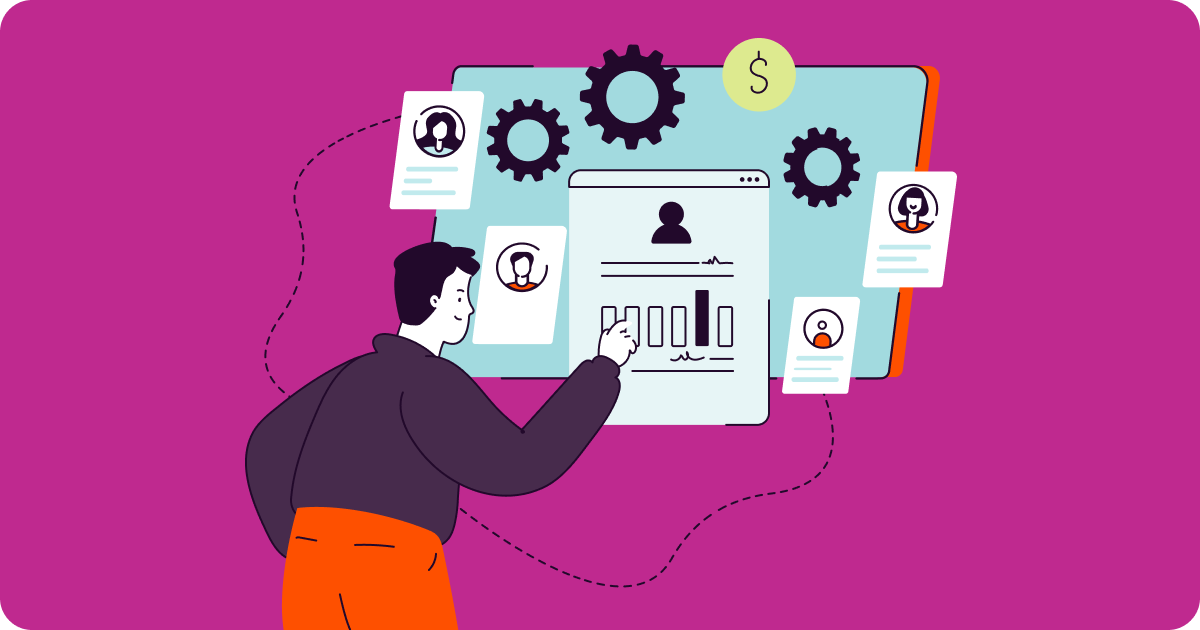In March of 2021, we were one year into the pandemic and most businesses were still adapting to the new normal. Buyers were more informed than ever before and they increasingly engaged across digital channels.
At the time, according to McKinsey, 75% of buyers preferred digital interactions and planned to continue doing business that way going forward. 97 percent of buyers were willing to spend $50,000 in a digital environment, while 15% of buyers were willing to spend more than $1 million, without meeting anyone face-to-face.
It was true in 2021 and remains true today: The key to winning business in digital channels is personalization. We wanted to uncover more about this truth, so we analyzed how our customers used Seismic from 2021 to 2022. You can check out the insights in our latest research report, The Personalization Payoff.
The importance of content personalization at scale
Today, buyers are more informed than ever before. The average buyer has 27 information-gathering interactions before they ever talk to a salesperson. By the time a buyer connects with a seller, they’ve already visited your website, reviewed resources, and compared your organization to its competitors.
In this environment, personalization helps sellers meet buyers precisely where they are in their journey. But personalization isn’t one-size-fits-all – what works for a small organization that sells a single product won’t necessarily work for a larger company with more employees and products. While smaller organizations can occasionally manage ad-hoc content personalization requests, similar requests are nearly impossible to scale at larger companies. That’s where Seismic comes in.
Personalized content and delivery make way for more wins
LiveSend enables Seismic customers to share content via personalized links instead of an attachment. LiveSend also captures engagement data, including how long a recipient viewed content, down to the page depth. This level of visibility helps our customers understand how effective their content is and what best resonates with their buyers.
Between 2021 and 2022, LiveSend link usage increased by 58%. Buyer engagement within LiveSend links also increased by 46%. Our research also discovered an increase in LiveDocs creation and engagement. LiveDocs generation increased by 41% while client engagement increased by 21%.
Several factors contributed to this growth. One of the primary reasons is ease of use. Over the years, we’ve consistently fine-tuned our LiveDocs and LiveSend offerings, making it easier for our customers to scale their personalized outreach. This was particularly important during the pandemic when organizations needed to become more efficient than ever before.
Buyers and sellers agree on Digital Sales Rooms
In Fall of 2021, we launched Digital Sales Rooms (DSR), a single, secure environment where sellers can share content and collaborate with buyers. Digital sales rooms are impactful for our sellers and prospects because they simplify the buyer’s journey. They reduce the number of locations where buyers access materials, lower the number of emails sent, and shorten the length of said emails.
Digital Sales Rooms were popular between 2021 and 2022, with usage increasing 187% year-over-year. Just as sellers created more DSRs, buyers were excited to interact with engagement increasing 197% during the same time period.
Using our own internal data, we also took a closer look at how DSRs affect business outcomes. According to research we published last summer, our sales reps who hit their quotas created 150% more DSRs for their active opportunities. And our reps who met or exceeded their quotas had 500% more opportunities where they used DSRs in the sales process.
The movement toward personalized video
One of the most noteworthy findings in our report was the increase in video usage. From 2021 to 2022, video usage in digital sales rooms increased 255%. I don’t think this growth in video usage would’ve been possible five years ago.
In the past, creating video was expensive, time-consuming, and difficult to create. That changed during the pandemic when we relied, almost exclusively, on video meetings. Almost overnight, folks adjusted to life in front of a camera for Teams, WebEx, and Zoom calls. And, as we became more comfortable in front of cameras, video spread to other parts of the business, specifically buyer engagement. Instead of sending five minutes of text, sellers can now send five minutes of video that’s more creative, easier to follow, and – most of all – more personal.
What’s next for personalization
Content personalization is here to stay. As we look forward to 2023 and beyond, we believe organizations that deepen their commitment to content personalization will be more competitive. Advances in artificial intelligence (AI) and machine learning (ML) will only continue to simplify how sellers identify, create, and share the right content in context for the right buyer.
Since 2020, Seismic has made several strategic investments in our AI/ML capabilities. You can learn more about them here. If you’re interested in learning more about how our customers use Seismic, download The Personalization Payoff.
